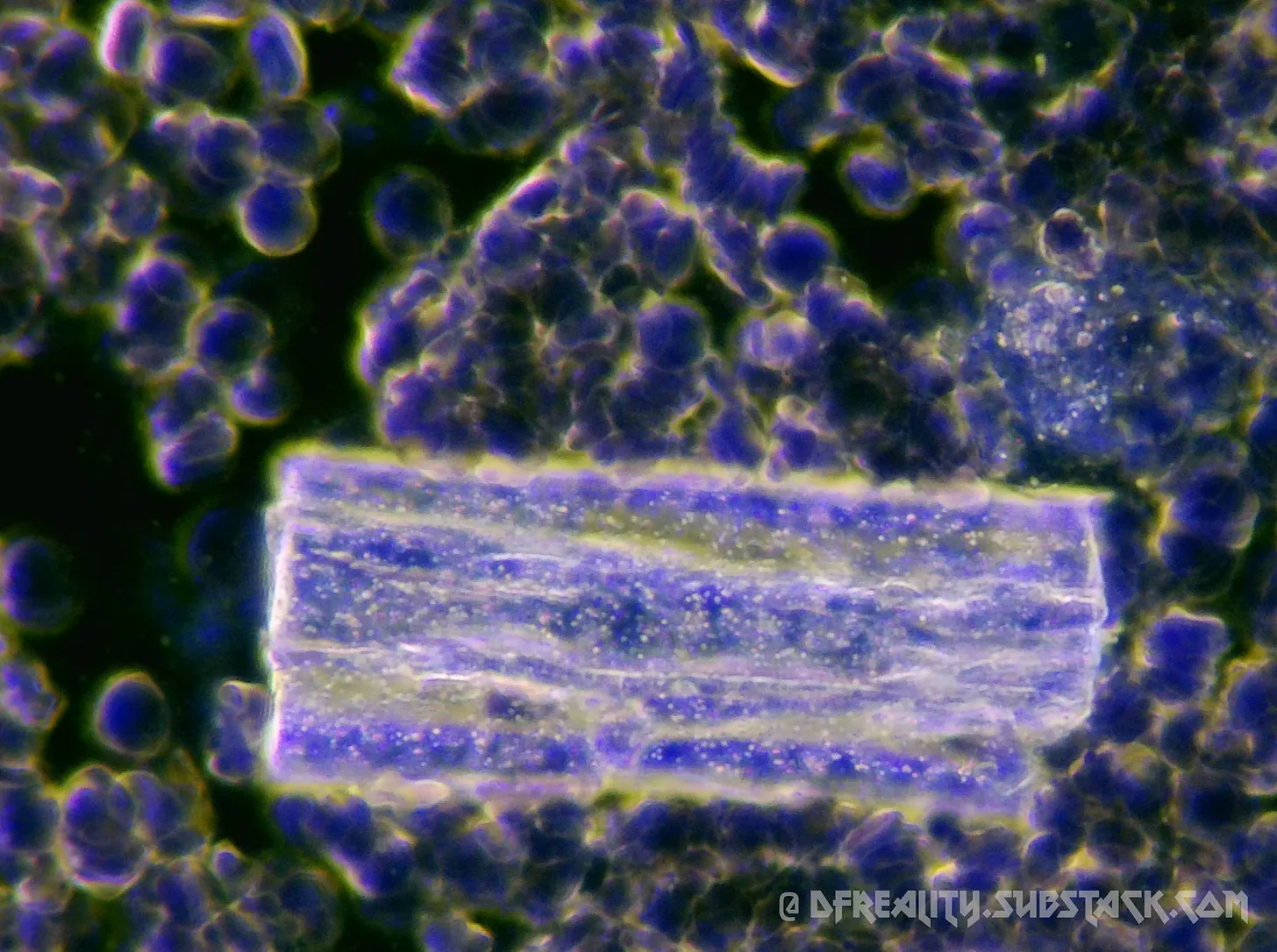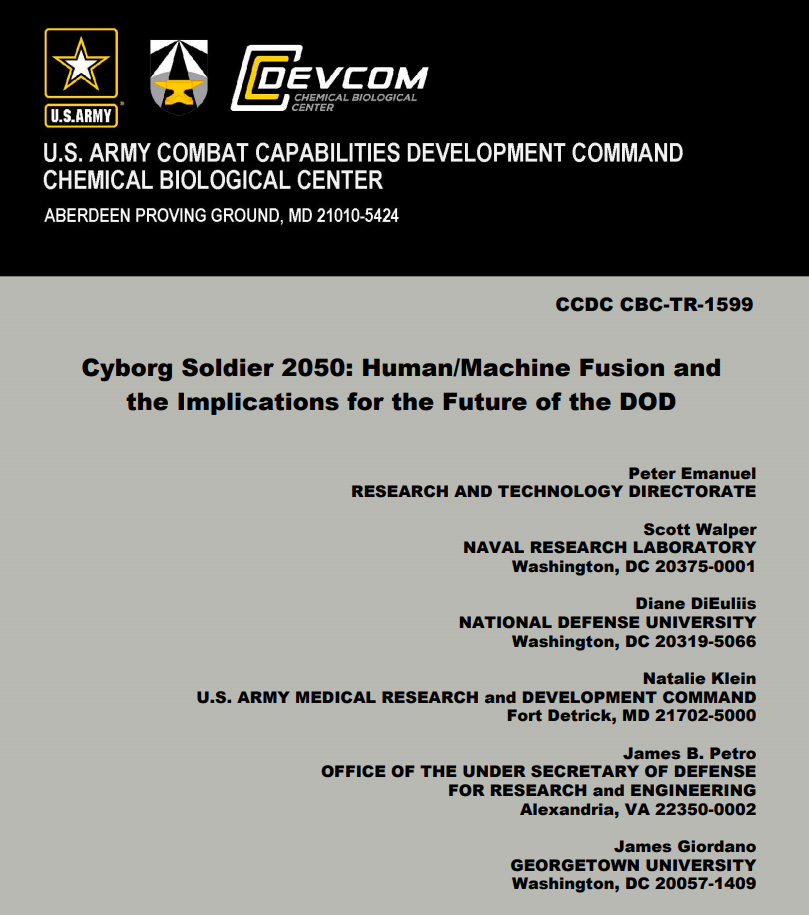by Scipio Eruditus, DF Reality:
 The worst crime in the history of mankind…
The worst crime in the history of mankind…
— Dr. James Giordano: The Brain is the Battlefield of the Future, at the Modern War Institute. West Point, September 25th 2018.
TRUTH LIVES on at https://sgtreport.tv/
I – Fifth Generation Warfare: An Introduction
A. A Vision of our Future

EXECUTIVE SUMMARY
A DoD Biotechnologies for Health and Human Performance Council (BHPC; Alexandria, VA) study group surveyed a wide range of current and emerging technologies relevant to assisting and augmenting human performance in many domains. The team used this information to develop a series of vignettes as case studies for discussion and analysis including feasibility; military application; and ethical, legal, and social implication (ELSI) considerations. Ultimately, the team selected four vignettes as being technically feasible by 2050 or earlier. The following vignettes are relevant to military needs and offer capabilities beyond current military systems:
ocular enhancements to imaging, sight, and situational awareness;
restoration and programmed muscular control through an optogenetic bodysuit sensor web;
auditory enhancement for communication and protection; and
direct neural enhancement of the human brain for two-way data transfer.
Although each of these technologies will offer the potential to incrementally enhance performance beyond the normal human baseline, the BHPC study group analysis suggested that the development of direct neural enhancements of the human brain for two-way data transfer would create a revolutionary advancement in future military capabilities. This technology is predicted to facilitate read/write capability between humans and machines and between humans through brain-to-brain interactions. These interactions would allow warfighters direct communication with unmanned and autonomous systems, as well as with other humans, to optimize command and control systems and operations. The potential for direct data exchange between human neural networks and microelectronic systems could revolutionize tactical warfighter communications, speed the transfer of knowledge throughout the chain of command, and ultimately dispel the “fog” of war. Direct neural enhancement of the human brain through neuro-silica interfaces could improve target acquisition and engagement and accelerate defensive and offensive systems.
Although the control of military hardware, enhanced situational awareness, and faster data assimilation afforded by direct neural control would fundamentally alter the battlefield by the year 2050, the other three cyborg technologies are also likely to be adopted in some form by warfighters and civil society. The BHPC study group predicted that human/machine enhancement technologies will become widely available before the year 2050 and will steadily mature, largely driven by civilian demand and a robust bio-economy that is at its earliest stages of development in today’s global market. The global healthcare market will fuel human/machine enhancement technologies primarily to augment the loss of functionality from injury or disease, and defense applications will likely not drive the market in its later stages. The BHPC study group anticipated that the gradual introduction of beneficial restorative cyborg technologies will, to an extent, acclimatize the population to their use.
— Cyborg Soldier 2050: Human/Machine Fusion and the Implications for the Future of the DOD (October 2019)
B. What is Fifth-generation Warfare?
Fifth-generation warfare is conducted primarily through non-kinetic military action, such as social engineering, misinformation, and cyberattacks, along with emerging technologies such as artificial intelligence and fully autonomous systems. Fifth generation warfare has been described by Daniel Abbot as a war of “information and perception”.
— Wikipedia
C. What is Graphene?
Graphene is carbon-based nanomaterial which was first discovered in 2004 by the working group of Andre Geim. Due to its unique properties and diverse properties such as transparency (depending on number of layers), thermal property, electrical conductivity and mechanical strength make it a versatile material for various fields. These include for example electronics, car industry, medical field (especially DNA sequencing), development of biosensors as well as cell differentiation and growth.
Graphene is insoluble in water and therefore the use is limited to passive platforms for detection and cell work. GO on the other hand can be used to administer anticancer drugs in biological cells and gene delivery. Due to the large surface area, the stability of the drug is maintained as its not altering the biological activity. Self-healing hydrogels for wound healing which can be injected include quaternized chitosan (QCS), polydopaminecoated reduced graphene oxide (rGO-PDA), and poly(N-isopropylacrylamide) (PNIPAm).
The toxicity is limiting it’s use and mainly depends on the route of administration, administered dose, method of synthesis of GO and its physicochemical properties.
Read More @ dfreality.substack.com



